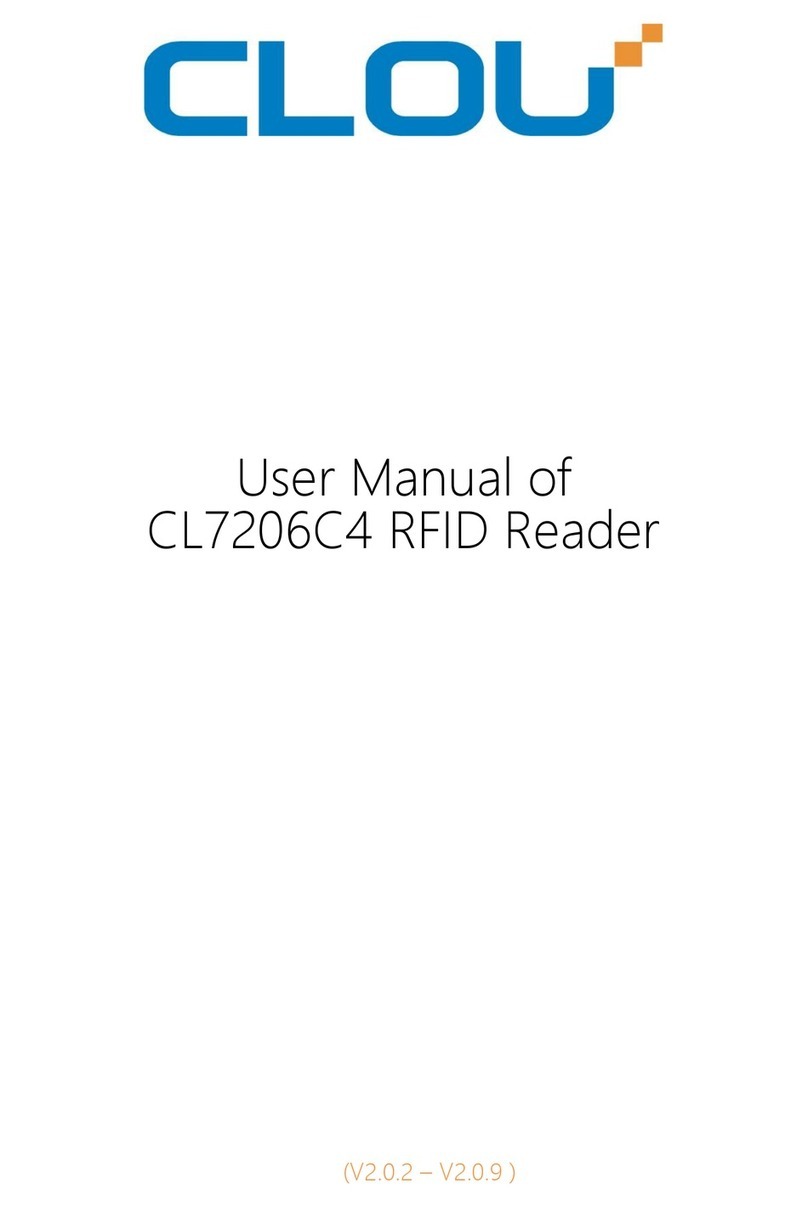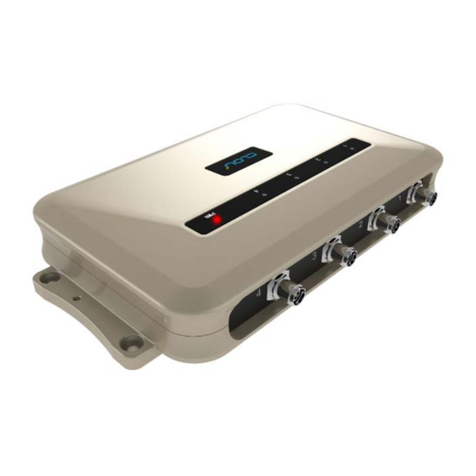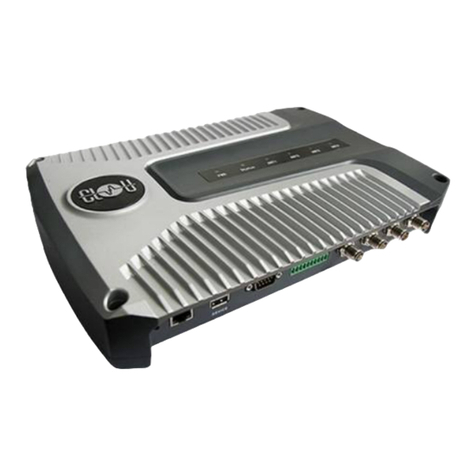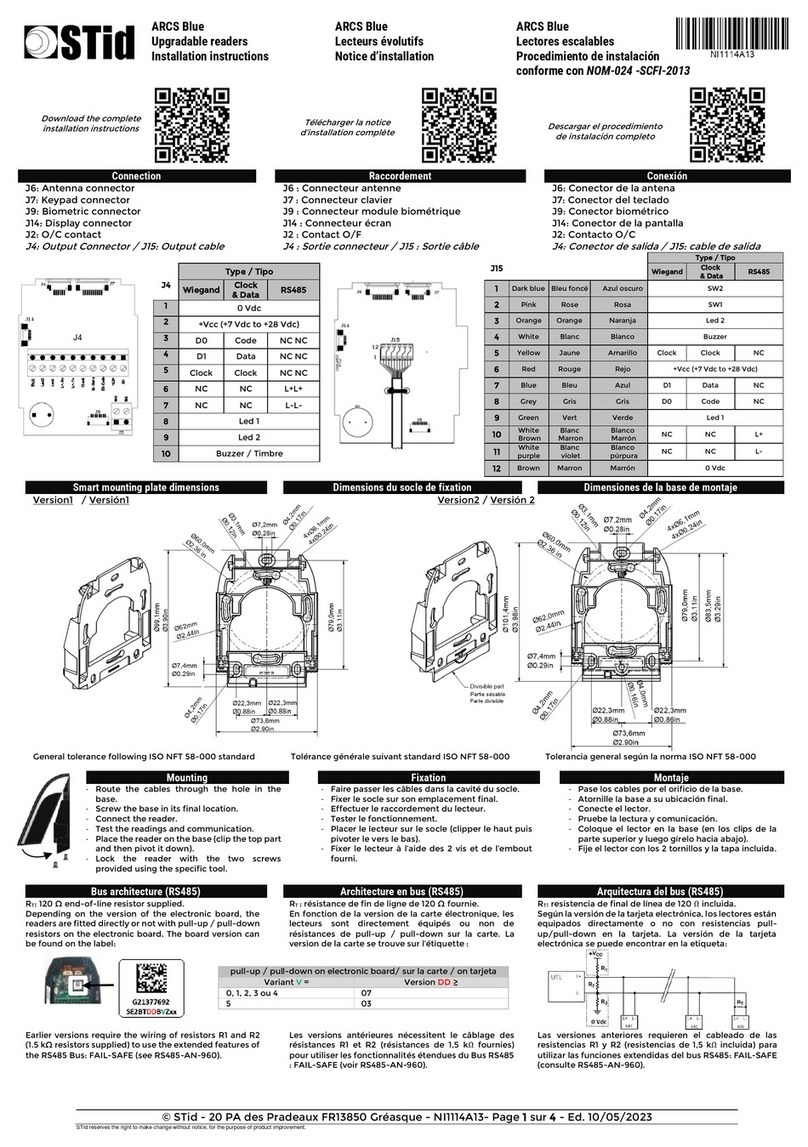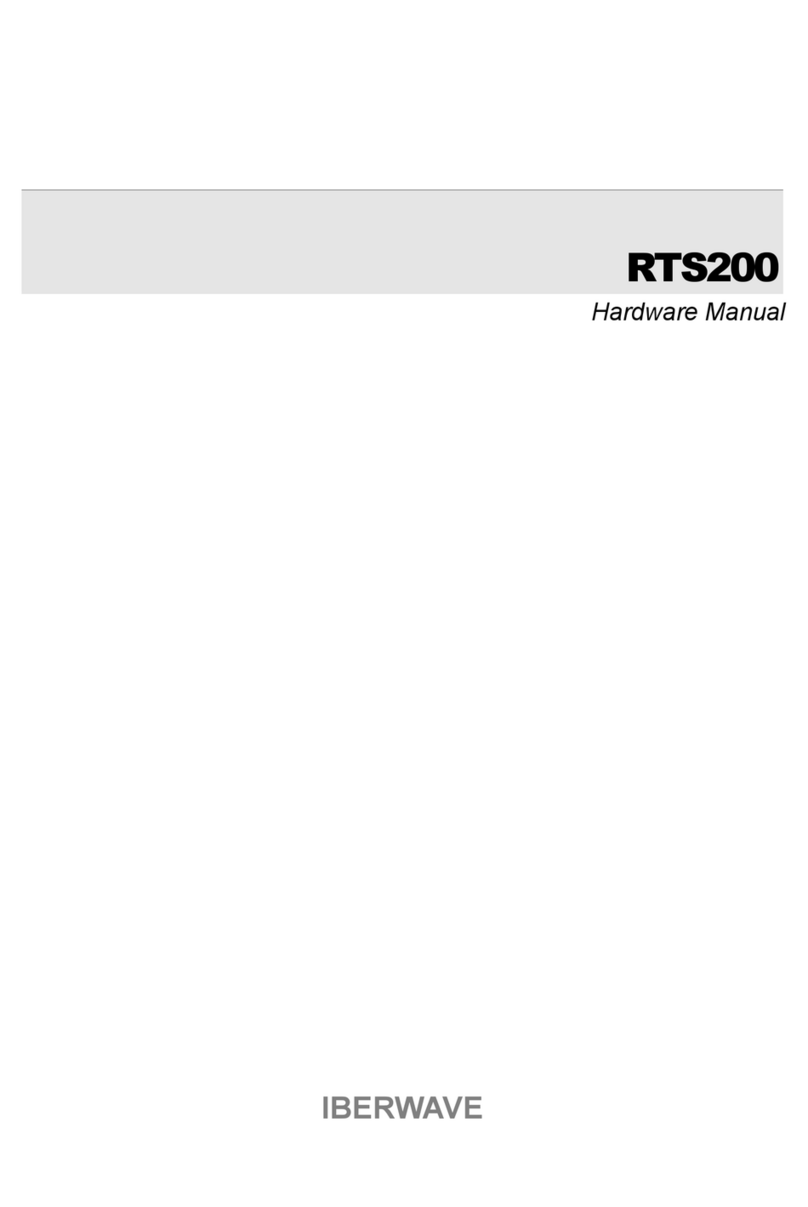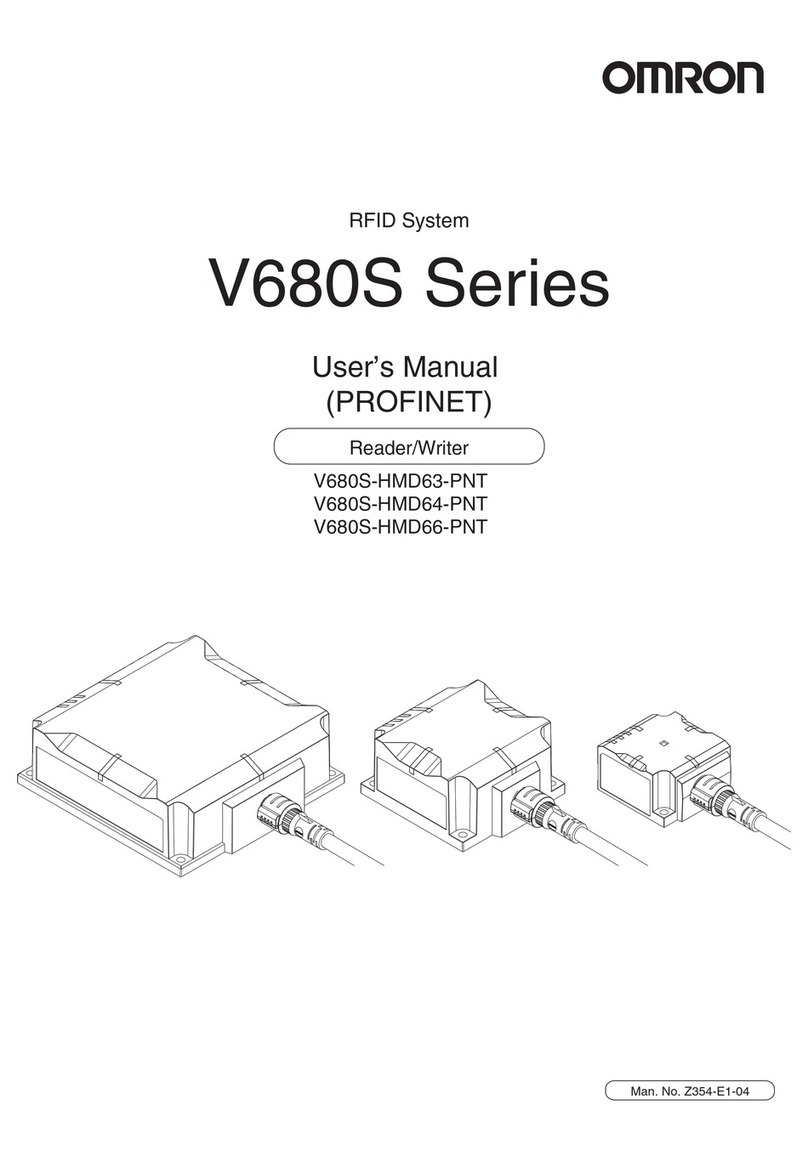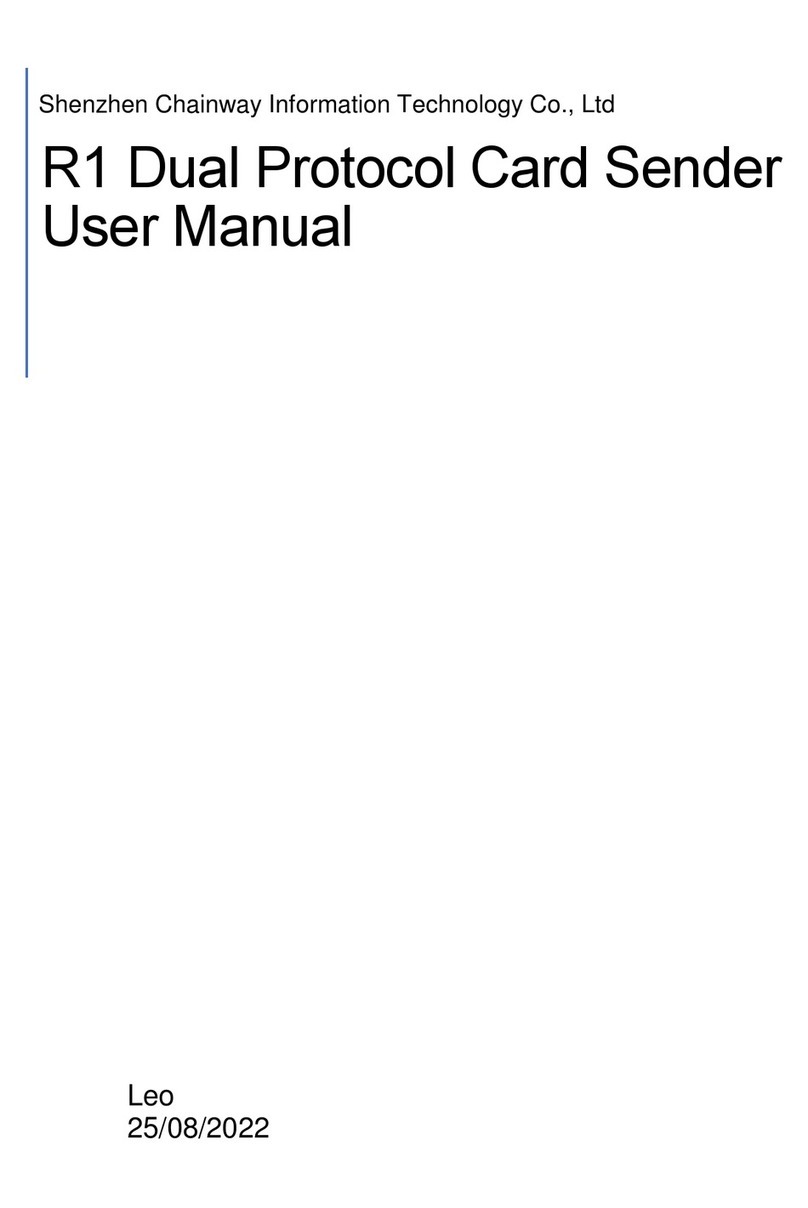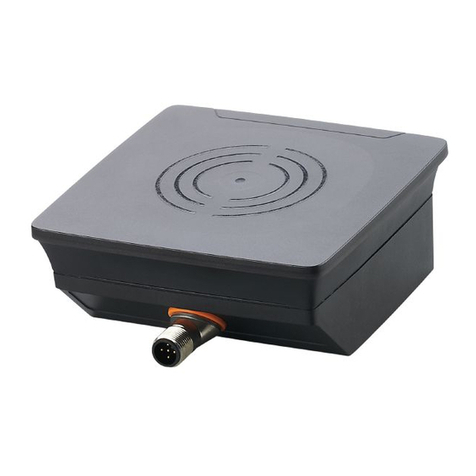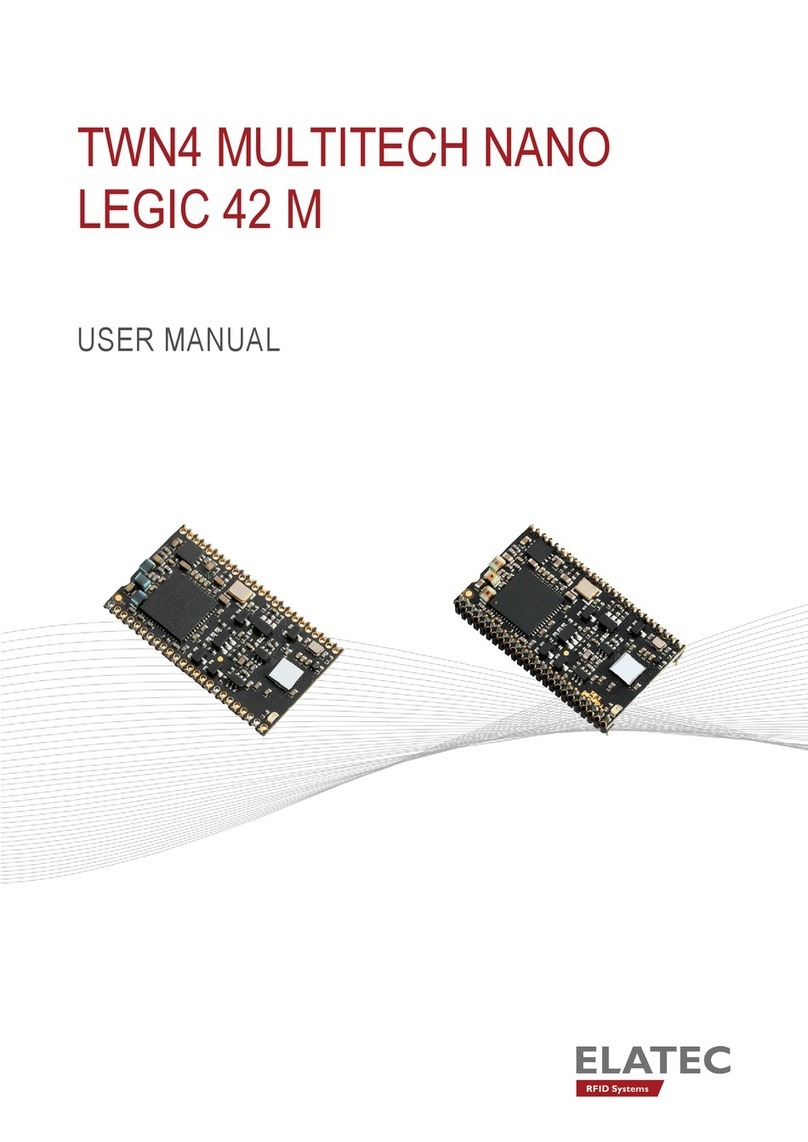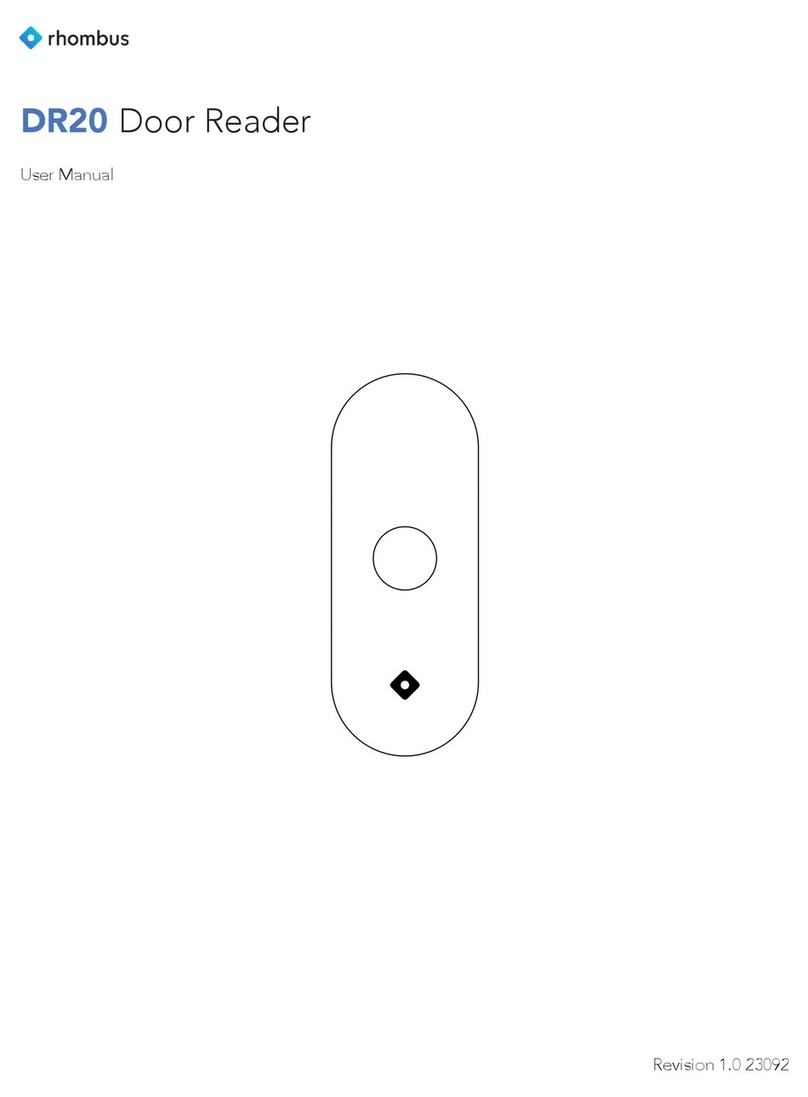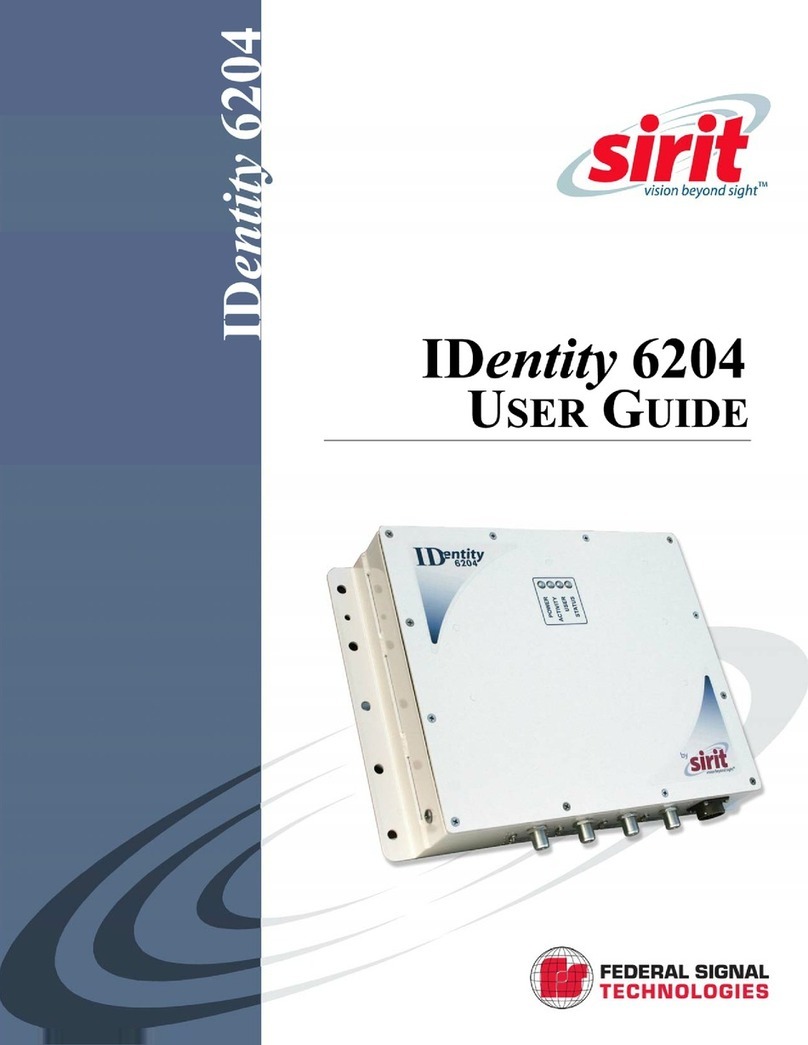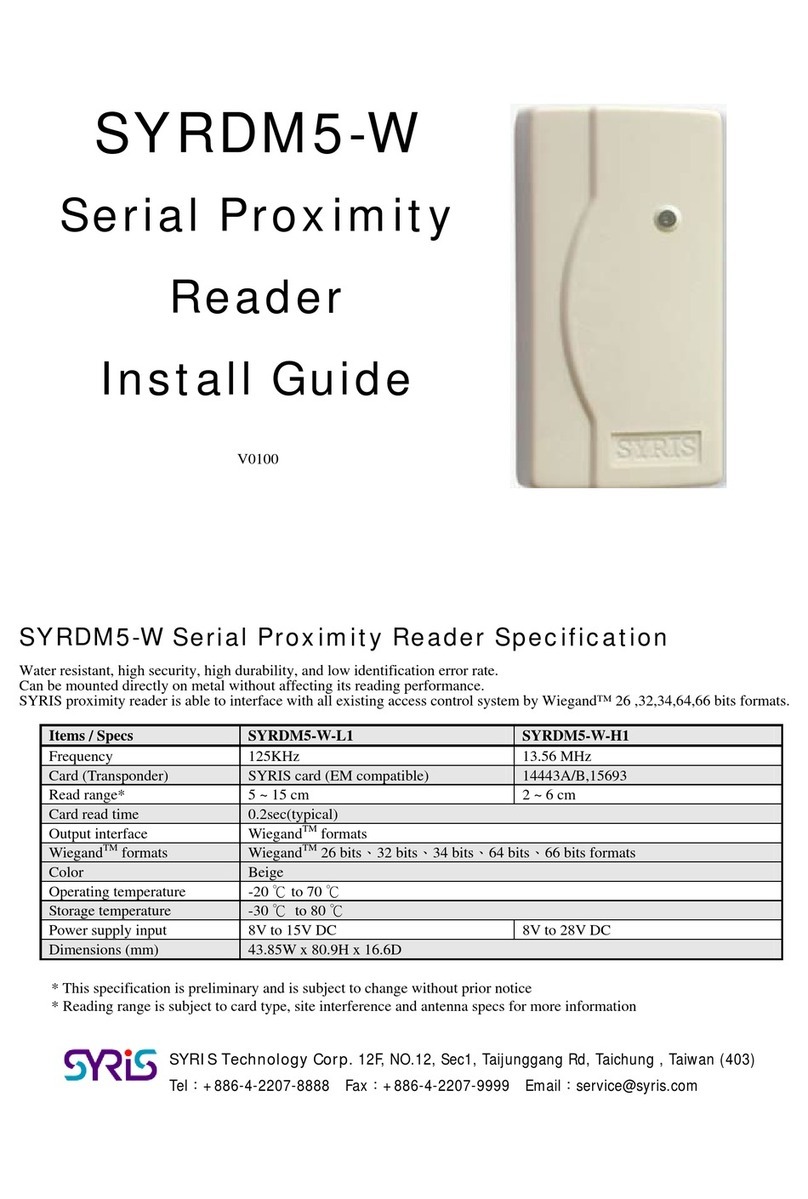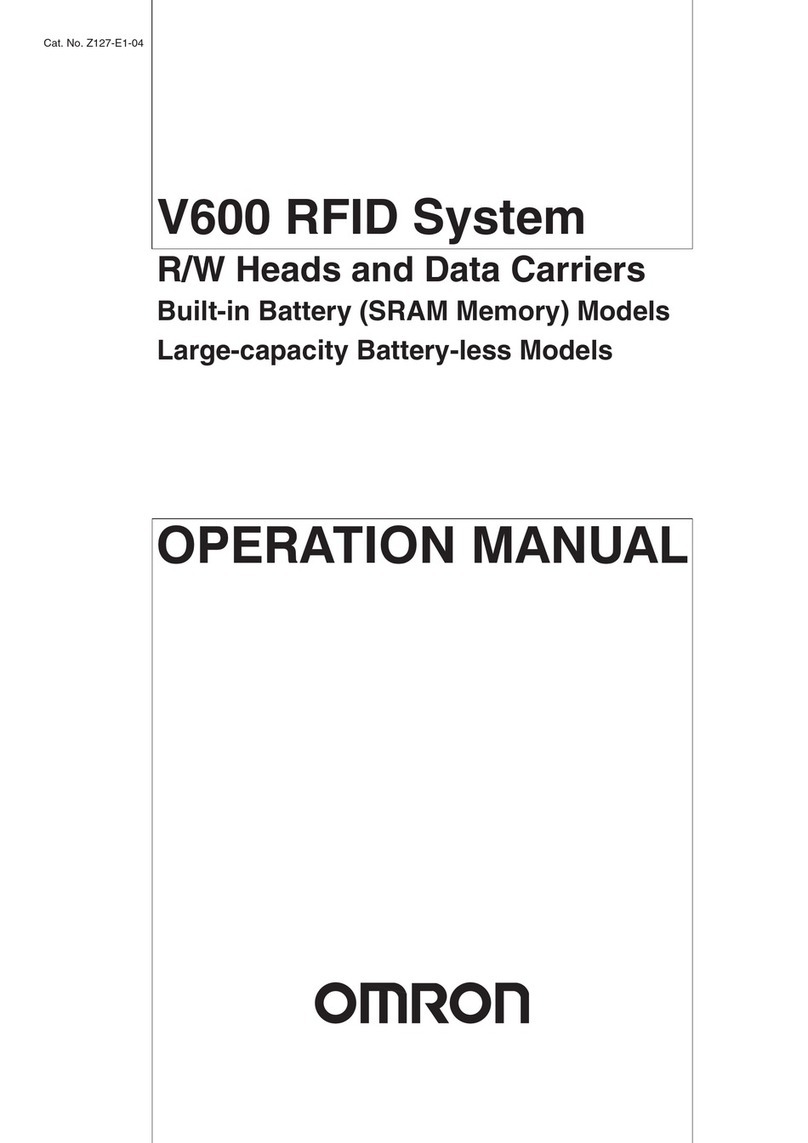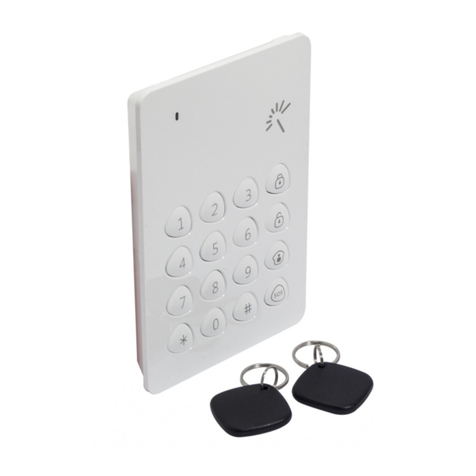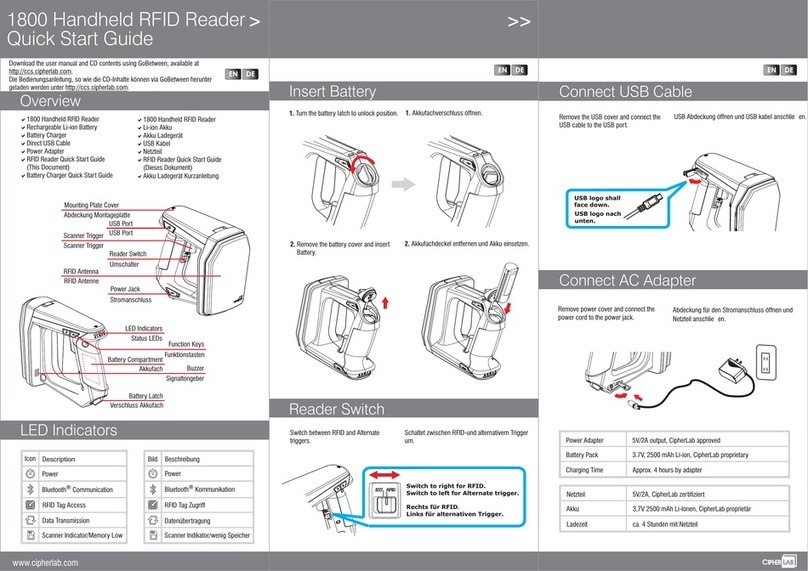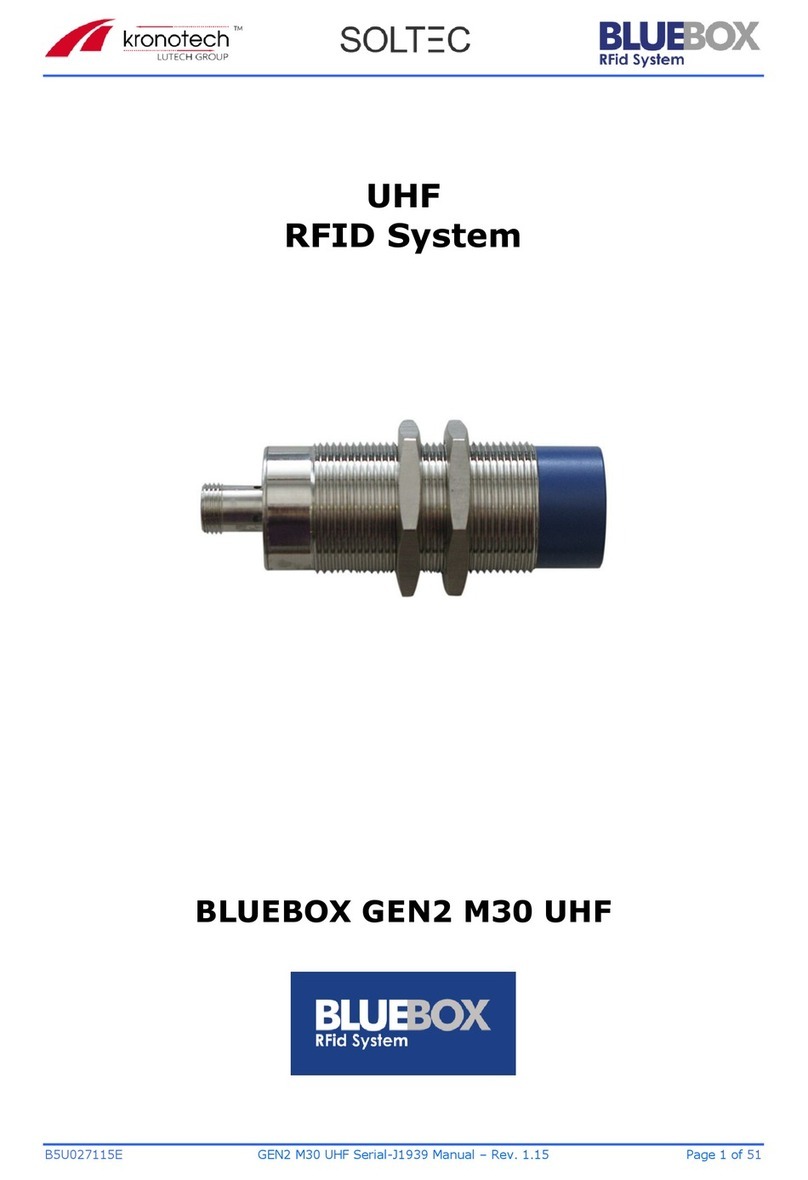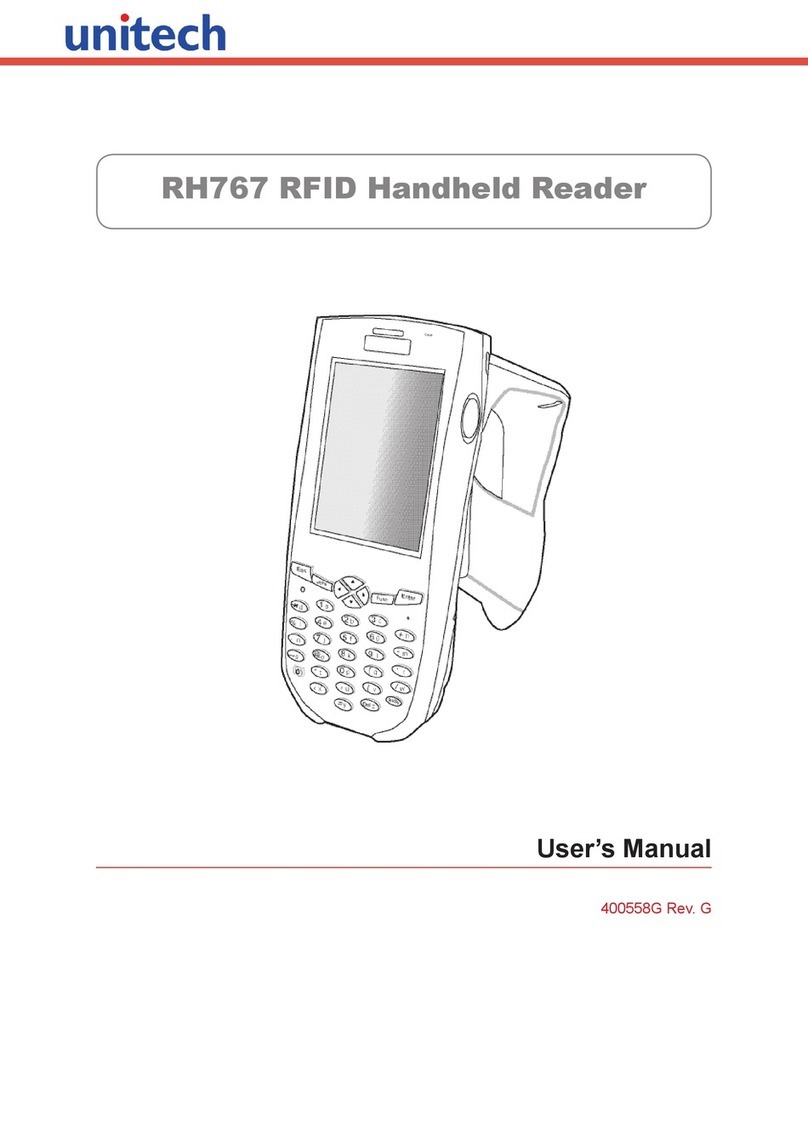Clou CL7206B2 User manual

1 / 52
User Manual of
CL7206B2 RFID Reader
Shenzhen Clou IOT Technologies Co., Ltd
(V2.0.2)

2 / 52
Welcome to be user of CLOU RFID products. Thanks for choosing CLOU’s integrated RFID Reader
CL7206B2. We believe our device will bring convenience for your work.

3 / 52
Catalogue
1. Technical Specification .................................................................................................................................................................. 6
1.1 Feature .............................................................................................................................................................................................. 6
1.2 Technical ........................................................................................................................................................................................... 6
1.2.1 Main function ......................................................................................................................................................................... 6
1.2.2 Technical parameter ............................................................................................................................................................ 6
1.2.3 Operational environment ................................................................................................................................................. 7
2. Sketch map ....................................................................................................................................................................................... 8
2.1 Physical construction ................................................................................................................................................................... 8
2.2 Weight .............................................................................................................................................................................................. 8
2.3 Interface chart ............................................................................................................................................................................... 8
2.3.1 Interface description ........................................................................................................................................................... 9
2.3.2 I/O aviation port chart .................................................................................................................................................... 10
2.3.3 LED panel description ...................................................................................................................................................... 11
2.4 External cable connection description .............................................................................................................................. 12
2.4.1 Power supply & communication cable description .............................................................................................. 12
2.4.2 I/O control interface cable description ..................................................................................................................... 13
2.4.3 External RF cable description ........................................................................................................................................ 15
2.4.4 External antenna description (optional) ................................................................................................................... 15
2.4.4 Network connection chart ............................................................................................................................................. 16
3. Installing ........................................................................................................................................................................................... 17
3.1 Precautions ................................................................................................................................................................................... 17
3.2 Installation conditions .............................................................................................................................................................. 17
3.3 Device connection ..................................................................................................................................................................... 17
3.3.1 Connected to power adapter........................................................................................................................................ 17

4 / 52
3.3.2 Connect an external antenna and RF cable ............................................................................................................ 18
3.3.2 Connected with PC ........................................................................................................................................................... 18
3.4 How to install the reader ........................................................................................................................................................ 18
3.5 Installation steps ......................................................................................................................................................................... 18
3.5.1 Vertical pole installation ................................................................................................................................................... 18
3.5.2 Horizontal pole installation ............................................................................................................................................ 19
3.6 Acceptance .................................................................................................................................................................................. 20
3.6.1 Check physical installation .............................................................................................................................................. 20
3.6.2 Check reader performance ........................................................................................................................................... 20
4. Software operating ...................................................................................................................................................................... 21
4.1 Demo software ............................................................................................................................................................................ 21
4.2 Application environment ........................................................................................................................................................ 21
4.3 Software version......................................................................................................................................................................... 21
4.4 Installation .................................................................................................................................................................................... 21
4.5 Operation ..................................................................................................................................................................................... 22
4.5.1 Device connection ............................................................................................................................................................. 22
4.5.2 Data display area ............................................................................................................................................................... 25
4.5.3 Write data ............................................................................................................................................................................ 29
4.5.4 TCP server / client mode ................................................................................................................................................ 32
4.5.5 Antenna configuration .................................................................................................................................................... 33
4.5.6 Base band parameter configuration .......................................................................................................................... 34
4.5.7 Antenna port power setting ......................................................................................................................................... 35
4.5.8 Clock setting ........................................................................................................................................................................ 36
4.5.9 Frequency Hopping.......................................................................................................................................................... 37
4.5.10 Label filtering ..................................................................................................................................................................... 38
4.5.11 Buffer and breakpoint resume .................................................................................................................................... 39

5 / 52
4.5.12 Auto idle set up ................................................................................................................................................................ 40
4.5.13 GPI/O configuration ....................................................................................................................................................... 41
4.5.14 Others .................................................................................................................................................................................. 42
4.5.15 Tools ...................................................................................................................................................................................... 44
5. Common failures .......................................................................................................................................................................... 47
5.1 Daily maintenance ..................................................................................................................................................................... 47
5.2 Common failure analysis and solution .............................................................................................................................. 47
6. Package ............................................................................................................................................................................................ 4 9
6.1 Package .......................................................................................................................................................................................... 49
6.2 Accessories ................................................................................................................................................................................... 49
6.3 Storage environment ............................................................................................................................................................... 50
7. After-sale service .......................................................................................................................................................................... 51

6 / 52
1. Technical Specification
1.1 Feature
CL7206B2 is a high performance RFID reader which integrating reader module & antenna. It complies with
ISO18000-6C/6B protocols, working frequency support international main frequency bands: FCC 902MHz
~928MHz, ESTI 860MHz ~865MHz,CN 920MHz ~ 925MHz and GB 840MHz~845MHz Export power
adjustable. This device is featured by long range, high-speed reading, & high accuracy, high sensitivity, strong
anti-interference etc.
1.2 Technical
1.2.1 Main function
Protocol: support ISO18000-6C/6B standard
Built-in LINUX operating system
Multiple communication port (Ethernet, RS232, RS485, USB), Wi-Fi, Bluetooth prolongable
Support tag data filtering
Support RSSI: the intensity of the perceived signal
Adjustable RF output power
Optional working mode: constant frequency / frequency hopping
Supports antenna detection function
Supports online and remote upgrade
I/O interface: 4 port opt coupler input, 4 port relay output and Weigand output
1.2.2 Technical parameter
Working frequency: GB 920MHz~925MHz, GB 840MHz~845MHz,

7 / 52
FCC 902MHz~928MHz, ETSI 865MHz~868MHz
Output power (port): 33dBm + 1dB (MAX)
Power adjustment: 1 dB step-by-step
Reading distance: 0 ~15meters (depending on tags, antennas and environment)
Channel bandwidth: <200 KHz
Integrated circular antenna VSWR:≤1.4:1
Integrated circular antenna gain:≥9dBi
RS232 serial communication rate: 115200bps (default), 19200 bps, 9600bps
RS485 interface communication rate: 115200bps (default), 19200 bps, 9600bps
Support: Weigand 26, 34, 66 interfaces
Power supply: 30V ~ 10V (power capacity is not less than 60W)
Power adapter: AC input 100V ~ 50Hz, 240V ~ 60Hz
DC output: 24V/2.5A
High protection grade: IP65
1.2.3 Operational environment
Working environment: -20℃~+70℃
Relative Humidity: 5%RH~90%RH(+25℃)

8 / 52
2. Sketch map
2.1 Physical construction
Physical size: 290mm*290mm*115mm(accessories not included)
Image 2-1 Structure diagram
2.2 Weight
Main body: 5kg(accessories excluded)
2.3 Interface chart
Image2-2 I/O & communication interface
1 — power & communication port
2 — I/O control interface

9 / 52
3 — Ventilation valve
4 — antenna port
2.3.1 Interface description
Picture 2-3 power supply & communication port aviation port number chart
Aviation plug signal definitions
Chart 2-1 Power & communication interface signal definition
PIN Description PIN definition
1 Power supply GND PGND
2 Power supply GND PGND
3 24V power positive +24V
4 24V power negative +24V
5 NC NC
6 NC NC
7 NC NC
8 Ethernet port TD-

10 / 52
9 Ethernet port TD+
10 RS232 receiving RXD RX
11 S PGND
12 Ethernet port RD-
13 Ethernet port RD+
14 RS232 receiving RXD TX
Picture2-4 I/O interface aviation port number chart
2.3.2 I/O aviation port chart
I/O aviation port definition as per in chart 2-2:
Chart 2-2 I/O port signal function definition
PIN No. Description PIN definition
1 Relay 1 output port R1
Table of contents
Other Clou RFID System manuals
